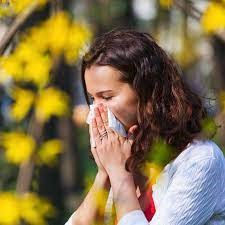
Help Prevent Seasonal Allergies with Insulation
Insulating your home can help reduce the infiltration of outdoor allergens, such as pollen, into your living space, but it's important to understand that insulation alone may not completely prevent seasonal allergies. Seasonal allergies are primarily triggered by airborne allergens like pollen, mold spores, and dust mites. While insulation can help improve your indoor air quality to some extent, it's just one part of a broader strategy to minimize allergen exposure. Here are some steps you can take to prevent seasonal allergies with insulation and other measures:
1. Properly insulate your home: Ensuring that your home is well-insulated can help reduce the infiltration of outdoor allergens. Proper insulation can help seal gaps and cracks in walls, ceilings, and floors, preventing pollen and other allergens from entering your home.
2. Use high-quality air filters: Install high-efficiency particulate air (HEPA) filters in your HVAC system. These filters can capture a significant portion of airborne allergens, including pollen, mold spores, and dust mites, as they circulate through your home.
3. Maintain your HVAC system: Regularly clean and maintain your heating, ventilation, and air conditioning (HVAC) system. Dirty or clogged filters can reduce the system's effectiveness in filtering out allergens.
4. Seal windows and doors: Ensure that windows and doors are properly sealed to prevent allergens from entering your home. Weatherstripping and caulking can be effective in sealing gaps.
5. Keep windows and doors closed: During peak allergy seasons, keep windows and doors closed to minimize outdoor allergen exposure. Use air conditioning with a clean filter instead to cool your home.
6. Clean and dust regularly: Regular cleaning, including vacuuming with a HEPA filter-equipped vacuum cleaner, can help remove allergens like dust mites from your home. Wash bedding and curtains frequently.
7. Use allergen-proof covers: Encase mattresses, pillows, and box springs with allergen-proof covers to prevent dust mites from thriving in these areas.
8. Maintain proper humidity levels: Keep indoor humidity levels between 30% and 50% to discourage the growth of mold and dust mites. Dehumidifiers and air purifiers can help with this.
9. Remove outdoor clothing and shoes: When entering your home, remove outdoor clothing and shoes to prevent tracking pollen and other allergens indoors.
10. Allergy-friendly landscaping: Consider landscaping with low-allergenic plants and trees that produce less pollen.
11. Consult with an allergist: If you have severe seasonal allergies, consult with an allergist for personalized advice and treatment options, such as allergy shots or medication.
While insulation can contribute to a more comfortable and allergen-resistant home environment, it's only one part of a comprehensive strategy to prevent seasonal allergies. Combining insulation with the above measures can help reduce allergen exposure and alleviate allergy symptoms for a more comfortable living space.
Our experts at Koala Insulation of Lexington are here to help get your home running more comfortable all while saving you money on your energy bills.
Ready to book your free insulation evaluation?
We have 3 convienant ways for you to get in touch
We Provide Insulation Services to the Following Lexington Areas
WINCHESTER, RICHMOND, LEXINGTON, GEORGETOWN, MILLERSBURG, NORTH MIDDLETOWN, PARIS, SADIEVILLE, STAMPING GROUND, FRANKFORT, BURGIN, HARRODSBURG, KEENE, MIDWAY, NICHOLASVILLE, SALVISA, VERSAILLES, WILMORE, LANCASTER
Counties Served
CLARK, MADISON, FAYETTE, SCOTT, BOURBON, FRANKLIN, MERCER, JESSAMINE, WOODFORD, GARRARD
Zip Code
40391, 40475, 40502, 40509, 40515, 40517, 40324, 40348, 40357, 40361, 40370, 40379, 40505, 40506, 40507, 40508, 40511, 40516, 40526, 40536, 40601, 40310, 40330, 40339, 40347, 40356, 40372, 40383, 40390, 40444, 40503, 40504, 40510, 40513, 40514
